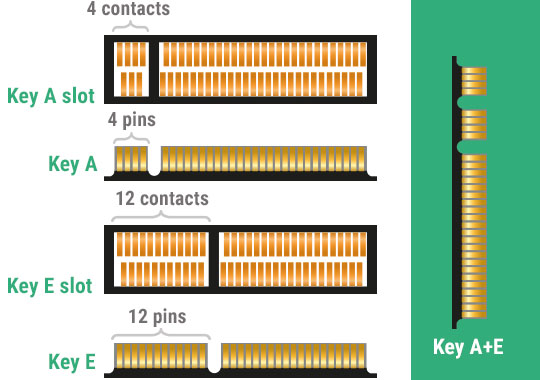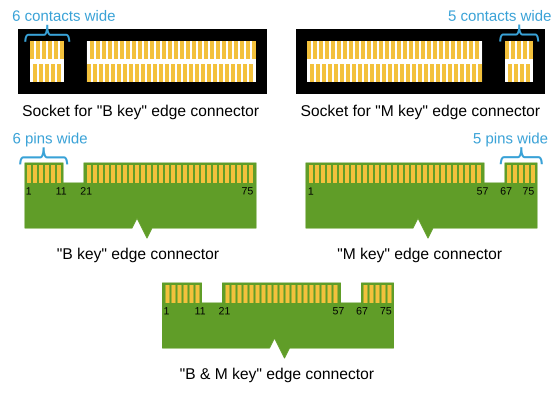The "key" of an m.2 defines what the pins mean, basically what signal they carry (PCIe, USB, ...). There's a nice table here, if you scroll down a bit. Some are extensions to others, and are pin compatible (meaning the things they have in common are on the same pins).
A key and E key are very similar, while E just provides a few more interfaces, but importantly A doesn't provide anything the E doesn't. So any card that can work in A can also work in E. This is why A+E is so common: they don't require the Mainboard to provide E, only A, but both will work so both notches are present.



